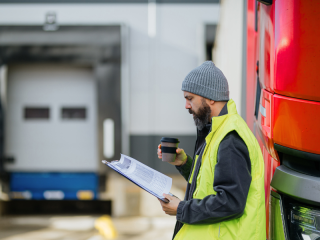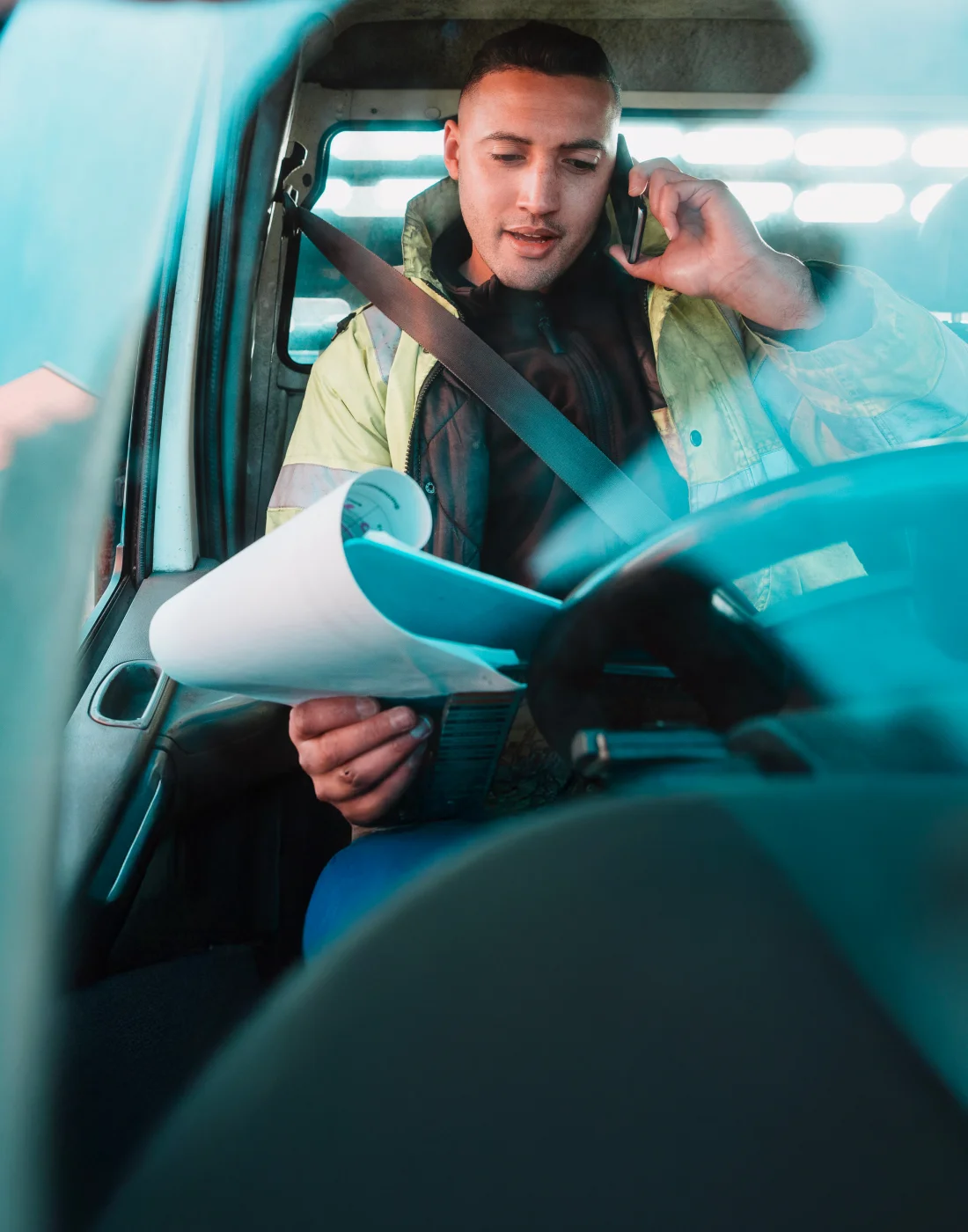
When it comes to road safety and fleet compliance, HGV walk-around checks are a non-negotiable. Doing those daily inspections helps keep your drivers, vehicles and other road users safe, and ensures your business stays on the right side of DVSA regulations.
What is a HGV walk-around check?
A walk-around check is basically a daily inspection of a heavy goods vehicle (HGV) before it makes it to the road. It is the driver’s legal responsibility to check that the vehicle is safe for those roads. This includes inspecting key components such as brakes, tyres, lights, mirrors and more.
The DVSA requires these checks to be carried out and recorded every day before the use of your vehicle. Failure to do so could lead to a multitude of fines, penalties or maybe even prosecution…
Why are walkaround checks important?
There are key reasons why HGV walk-around checks are a non-negotiable:
Safety: Regular inspections early could help prevent future major road accidents.
Compliance: Checks are a legal requirement under UK law. Without the full proper records, your business risks actions from the DVSA
Cost-Saving: Spotting and fixing faults early can help to prevent more costly repairs down the road.
For a fleet manager, walk-around checks could also help build a culture of responsibility amongst drivers. It allows them to literally put safety first, in turn reinforcing professional driving standards.
What should be included in a daily HGV check?
Here is a simplified version of what should be checked. The DVSA outlines several key areas which drivers should inspect.
Brakes
Tyres and wheels
Lights and indicators
Mirrors and glass
Horn and dashboard warning lights
Coupling (for trailers)
Load security
Fuel, oil, and water levels
Bodywork and doors
Seatbelts and driver controls
How long should a walkaround check take?
The DVSA states that a thorough walk-around check should take at least 15 minutes. If a walk-around check is rushed, it is seen as a red flag to enforcing officers. If a check is incomplete or rushed, you could face penalties, especially if a fault that could have been spotted during a walk-around check is found during a roadside inspection.
Make sure you or your drivers understand the value of doing these checks properly. Taking just 15 minutes could prevent a costly breakdown, a serious incident or a hefty fine.
How should walkaround checks be recorded?
Records are essential. Without the records, there is no way of proving that the walk-around check took place. But to answer the question, they can either be recorded digitally or in paper forms.
There are multiple apps which you can use to record, such as Vehocheck and AssetGo – apps can help make the process go quicker by being slightly more efficient.
Here at Right Fuel Card, making things efficient is what we like to do. We work with fleet managers and businesses to optimise every aspect of fleet operations-from fuel efficiency to safety compliance.
Final thoughts
Don’t look at walk-around checks as a basic tick-box exercise. Look at it as a daily opportunity to make roads safer, prevent disruption, and avoid unexpected costs. They don’t need to slow your operations down, and they might just keep the business moving smoothly.




